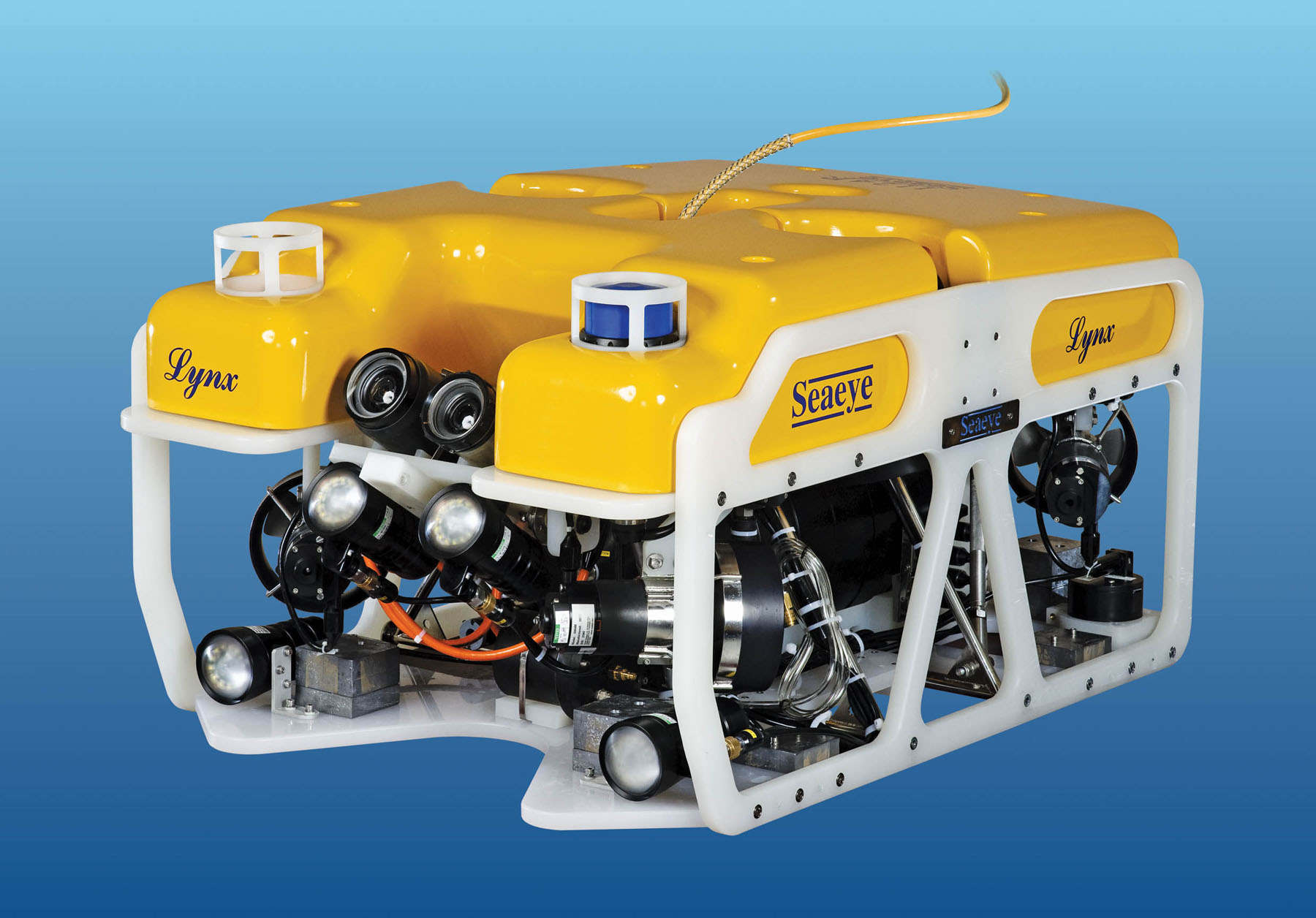General Manager, André Weber Carneiro explains why he favours the Lynx. “It’s powerful for its type, with a good depth rating that enables us to perform a wide span of services.”
He says that the model has the power to handle some work tooling not usually possible in an ROV of its size. “And still has power left over to go where you want, and do what is needed.”
The six thruster 1500 metre-rated Lynx will be used for the inspection of oil lines, risers and jackets.
For line inspection a Tritech digital precision altimeter has been fitted to maintain accurate offset from the seabed as the ROV follows the pipeline.
When undertaking jacket inspection, a fitted CDL fibre-optic gyro means there is no magnetic interference from the jacket structure whilst accurately tracking the ROV's motion.
Along with the existing Lynx and a deep-rated falcon, the new ROV will work from both fixed rigs and ships.

The six thruster 1500 metre-rated Lynx.
Constantly moving the ROV system across and between rigs makes the Lynx system and its tether management cage an ideal choice, as it is particularly easy to relocate, says André Weber Carneiro.
He also says that operating the ROV from a cage reduces the influence of currents – even though its thruster power still allows precise manoeuvrability whilst swimming on its 250 metre excursion tether.
Other hi-spec equipment fitted to the system includes a Seaeye wide-angle low-light colour camera, a range of Konsberg cameras, including a high definition low-light CDD camera, a colour zoom camera and a high definition TV camera with fibre output.
A detachable tooling skid is also supplied together with a Gauntlet Plus four-function manipulator with a quick-change feature for fitting a cutter or rotary brush cleaner.
A CP contact probe also comes with the system.
With over 200 billion barrels of reserves estimated in Brazil’s oil fields, the demand for powerful and intelligent ROVs that can work reliably in deep water operations will grow as the huge fields are developed.